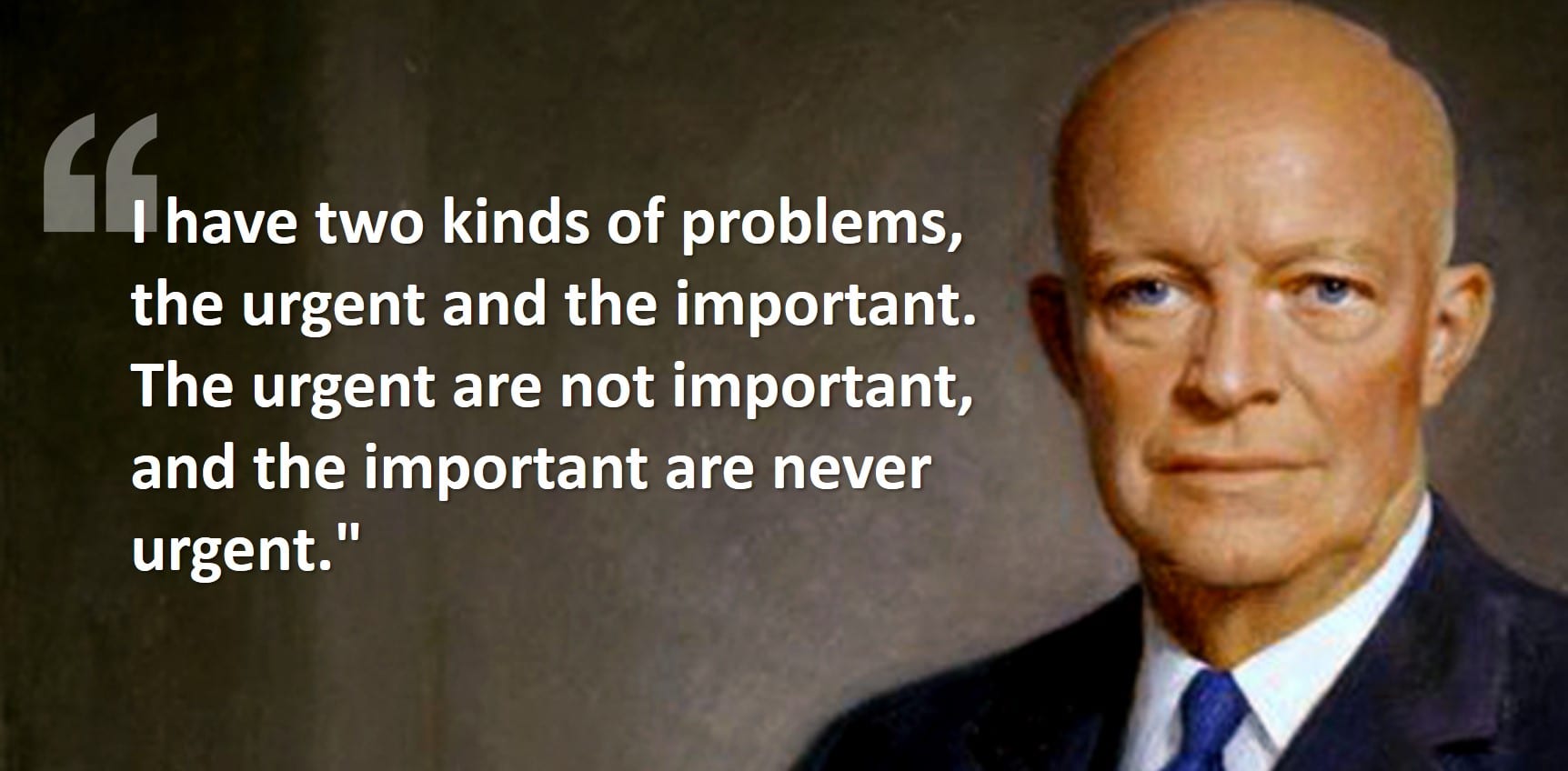Stop Using the Eisenhower Decision Matrix – Use This Instead

“The heart is deceitful above all things and beyond cure, who can understand it?” – Jeremiah 17:9
“Have you recently had the feeling there is more to do than you could achieve in a day, a week or even a month?”
This is the intro question for one of many how-to-videos describing what has become known as the Eisenhower Decision Matrix. The name of this popular tool is supposedly taken from its alleged source of inspiration – none other than Dwight D. Eisenhower, the 34th President of the United States. He is quoted as saying this:

The truth is, the decision matrix was developed by Stephen Covey in his seminal work, “The 7 Habits of Highly Effective People.” Under Habit 3: Put First Things First, he unfolds the idea of a four quadrant view of all workplace activity. It looks something like the graphic below.
And when you read Covey’s explanation of the four quadrants, he explicitly states that successful people live and exist in Quadrant III, the Decide quadrant. In fact, he paints a disparaging picture of people who work in Quadrant I, the Do quadrant. He paints them as crisis-driven fire fighters, in a sense. They are driven by their emotions, abandoning reason.

So, why cast dispersions on this tool? It is all based in emotion. Even as Covey describes it, Quadrant I people are “problem-minded people.”
This is the essence of Jeremiah 17:9 – emotions are deceitful. If we make decisions based on our emotions, we are likely to be tricked by what seems urgent or important.
That means the trouble resides in the horizontal and vertical axis — Urgent, Important, Not Urgent and Not Important. These four descriptors are TERRIBLY SUBJECTIVE. What may be urgent for you may not be urgent for another. What may be important for you may not be important for another.
Think of it this way: You are a leader of a division responsible for managing costs, driving out waste and improving profitability. Will you rely on your employees to determine what is Urgent or Important? I hope not, at least not without a host of strategic training. And if you choose to use this matrix within your team, it requires you to get them to either think exactly like you do (which may not be what’s best for the department) or just swallow what you consider important and urgent.
There is a Better Tool
There is a much better path to workload prioritization that still uses a great decision matrix – and it’s called the Action Priority Matrix. Like the Eisenhower Matrix, it too has four quadrants. In this case, the axis are defined by a simple combination of department success metrics and efficiency in delivering your department solutions. In this way it is not left to subjective reasoning but instead, performance directives handed down from upper level management.
For example: Let’s say you are back at the helm of a department where you are responsible for managing costs, driving out waste and improving profitability. Now, with the Action Priority Matrix in hand, you can base prioritization of effort on actual numerical targets defined by corporate success metrics. You will make choices based on empirical data, not feelings…which are always deceptive.
To access the Action Priority Matrix, select one of the links above.




